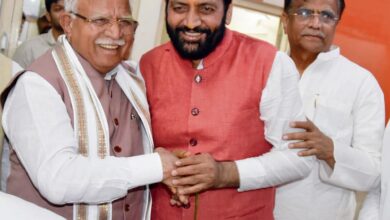Important connection error
The effect of the harsh summer on Wayanad’s verdant trees is evident when the KSRTC bus travels through the Nadukani ghat. The streams are becoming smaller and the meadows have dried up.

Farmers in Wayanad have been complaining about the lack of the southwest monsoon and how it has impacted the paddy cultivation cycle for the last several years. In addition, animals are moving into human areas in search of water and food due to the extreme heat. According to Gopi, a farmer in Sultan Bathery, “people are migrating to towns abandoning their farmlands fearing wild animals.”
Our crops are being destroyed by bisons, elephants, monkeys, deer, wild pigs, and squirrels. Additionally, since tigers are out and about after dark, we are afraid to go outside after dark. Small-scale farmers mostly make their living from dairy farming, but Gopi notes that some are even selling their livestock out of fear of a tiger attack. Farmers claim that too many tigers are living in the Wayanad sanctuary and that the large animals are wandering into settlements.
In addition, issues about infrastructure development and the minimum support price for agricultural goods are often posed to politicians when they are out on the campaign trail. According to Mananthavady physician Dr. Biju Ninan, “the lack of medical facilities is the biggest challenge for Wayanad residents.”
“The Mananthavady Medical College Hospital lacks facilities for emergency medicine, including cardiac care.”
The second major obstacle that stands in the way of critical patients being referred to the Kozhikode Medical College Hospital is transportation. “There are constant traffic jams on the Thamarssery Ghat Road.” Over the last two years, some 15 people have passed away in ambulances while being brought to Kozhikode, according to Dr. Biju.
Former hospital management committee member Kunhabdulla Thirumangalam claims that with the creation of the Wayanad district in 1980, the Mananthavady taluk hospital was upgraded to a district hospital. “The amenities didn’t change. The hospital was recently transformed into a medical college, although it lacks super specialty amenities. There isn’t a cardiologist or neurologist here. The disadvantaged groups will suffer greatly from this, he claims.
Dr. Biju notes that the Center authorized a research center with blood testing capabilities since sickle cell anemia is quite prevalent in the tribal population. Despite the fact that previous health minister K K Shailaja placed the foundation stone, the project has not yet begun.
The Madhya Pradesh government owns the Beenachi Estate near Sultan Bathery, which has five hundred acres available. “The All India Institute of Medical Sciences should be established there, and the state government should persuade the Center to do so,” he argues.
The fight for land rights by the indigenous population is still disregarded by politicians. The state has not yet taken anything, even though the Center has approved the distribution of land. Tribal families reside in thatched huts wrapped in plastic sheets and without access to power or water in the Pulimoodu estate close to Mananthavady.
About forty families had seized the estate three years ago in protest, demanding the allotment of land, but their complaint has elicited no reaction. The situation of the roughly 100 households that lived in the Mariyanad Estate next to Sultan Bathery is the same. We collect water from the neighboring creek, wear it on our heads, and ascend the hill. Many households have moved since there is no electricity or water connection. We get by on the free rice provided by the government,” Kattu Naicker community member Jaya explains. The construction of the Nilambur-Nanjangud railway line, which would cut the travel time between Kochi and Bengaluru to eight hours, has been demanded by the locals of Nilambur.
The Nilambur-Mysuru Railway Action Council’s general secretary, Dr. Joshua Koshy, notes that “the project will open a third railway line from Kerala to other states.” “This project is the only one that can bring development to Malabar because the Salem-Coimbatore line is saturated.”
According to Dr. Joshua, the Thalassery-Mysuru project was given priority by the first Pinarayi administration even though the Center had approved it in 2013.
President of the Nilambur Hotel and Restaurant Association Anas Union proposes bringing the long-stalled Nilambur bypass project back to life. “In order to guarantee improved connectivity between Malappuram and Wayanad, we want intervention to develop the Nilambur-Munderi-Chooralmala-Meppadi road,” he states.
With the end of Ramadan, campaigning is expected to pick up speed as the three fronts step up their efforts.
DCC vice-president O V Appachan said, “Rahul Gandhi has changed the profile of Wayanad and he lives in the people’s hearts.”
The LDF has gained fresh life with the entrance of Annie Raja, a national leader of the CPI.
“Even though Wayanad is a UDF constituency, the people here are not happy with our MP’s performance,” a CPM leader claims.
And the NDA members enthusiastically embraced K Surendran’s candidacy.
BJP leader Sandeep Warrier said, “We have about 100 public meetings planned in which Central and state leaders will participate.”
Door-to-door campaigning has become the standard, with polling taking place in two weeks. Voters in Wayanad, then, have a lot of questions.







